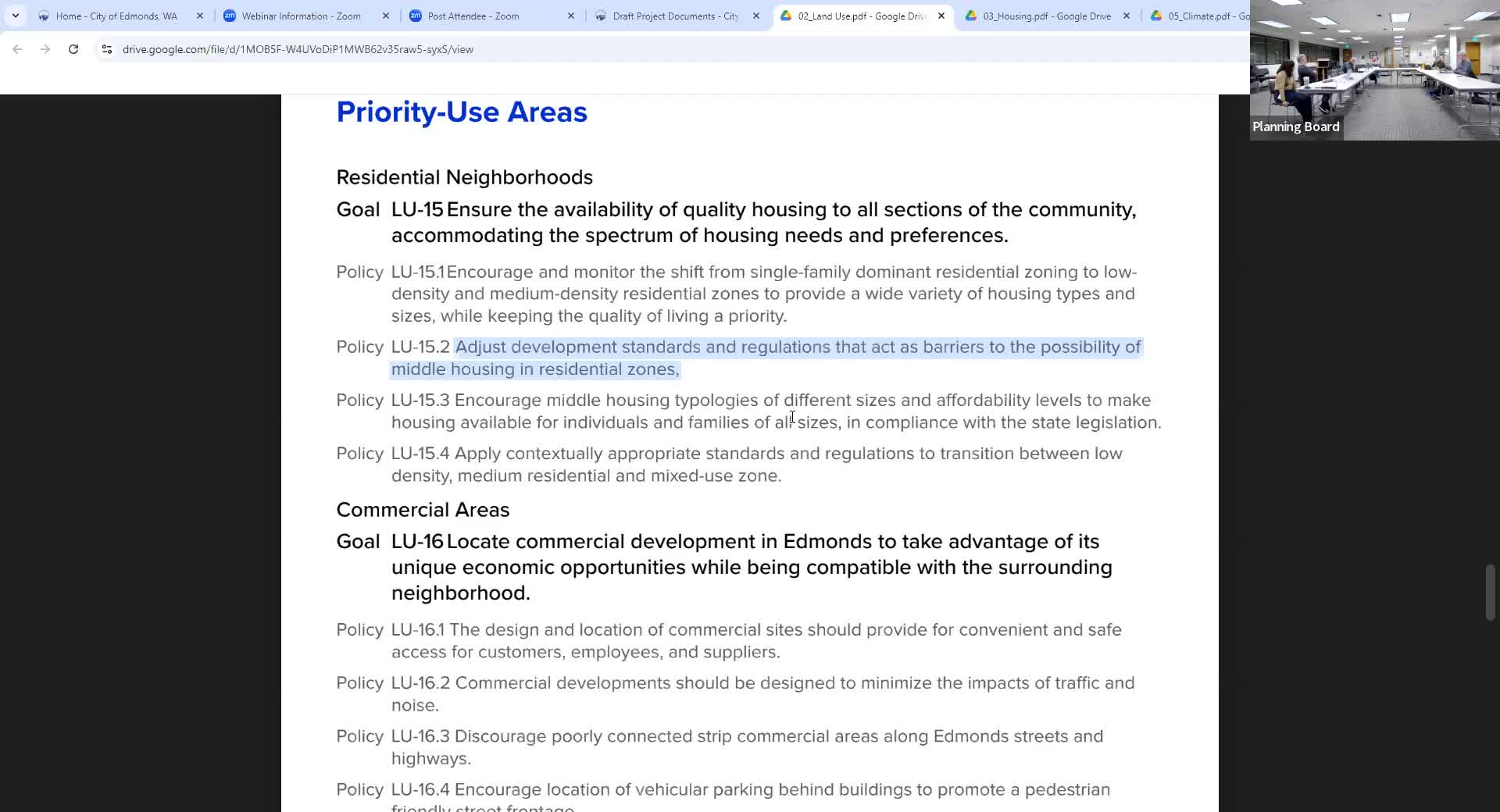Housing Code Changes Spark Debate Over Development Standards
October 17, 2024 | Edmonds, Snohomish County, Washington
This article was created by AI summarizing key points discussed. AI makes mistakes, so for full details and context, please refer to the video of the full meeting. Please report any errors so we can fix them. Report an error »

In a recent government meeting, officials discussed the need to revise development standards to accommodate various housing types, particularly middle housing, in residential areas. The conversation highlighted the challenges posed by existing regulations that may inadvertently restrict the construction of essential housing options, such as stacked flats and duplexes.
Participants emphasized the importance of ensuring that development codes do not impose height restrictions or other limitations that could hinder the creation of diverse housing types. One official pointed out that while it is crucial to adjust standards, it is equally important to maintain certain regulations to prevent developers from monopolizing residential zones with high-density structures that may not align with community needs.
The dialogue also touched on the necessity of balancing state requirements with local preferences, as officials acknowledged that many residents are drawn to the area for its unique character and charm. Concerns were raised about the potential impact of new housing developments on views, privacy, and the overall ambiance of neighborhoods.
Officials confirmed that the proposed housing strategies exceed the state-mandated unit requirements, providing a buffer that allows flexibility in planning. This approach aims to ensure that while accommodating growth, the integrity of existing residential areas is preserved.
As the meeting concluded, it was clear that further analysis of the zoning code is essential to identify and amend any regulations that may obstruct the development of middle housing. The officials expressed a commitment to creating a housing framework that meets both state guidelines and the needs of the community, ensuring that future developments enhance rather than detract from the area's appeal.
Participants emphasized the importance of ensuring that development codes do not impose height restrictions or other limitations that could hinder the creation of diverse housing types. One official pointed out that while it is crucial to adjust standards, it is equally important to maintain certain regulations to prevent developers from monopolizing residential zones with high-density structures that may not align with community needs.
The dialogue also touched on the necessity of balancing state requirements with local preferences, as officials acknowledged that many residents are drawn to the area for its unique character and charm. Concerns were raised about the potential impact of new housing developments on views, privacy, and the overall ambiance of neighborhoods.
Officials confirmed that the proposed housing strategies exceed the state-mandated unit requirements, providing a buffer that allows flexibility in planning. This approach aims to ensure that while accommodating growth, the integrity of existing residential areas is preserved.
As the meeting concluded, it was clear that further analysis of the zoning code is essential to identify and amend any regulations that may obstruct the development of middle housing. The officials expressed a commitment to creating a housing framework that meets both state guidelines and the needs of the community, ensuring that future developments enhance rather than detract from the area's appeal.
View full meeting
This article is based on a recent meeting—watch the full video and explore the complete transcript for deeper insights into the discussion.
View full meeting
